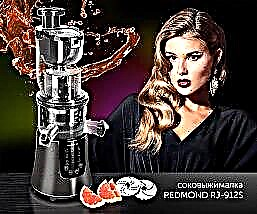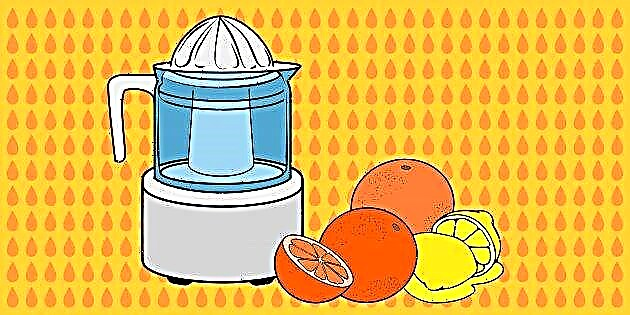
They make juice only from oranges, lemons, grapefruits, limes and tangerines. Fruits should be cut in half and put flesh down on a ribbed cone. When pressed on the fruit, juice is formed from above and flows into the tank.
- Benefits. Compact and easy to use. Cheaper than centrifugal and screw.
- Disadvantages. Not universal, suitable only for citrus fruits. Juice cannot be stocked for the future.
How to choose
Citrus juicers are manual, mechanical, and electric.
Manual ones are the cheapest, but ineffective: with them one glass of juice will need more fruit.
Mechanical work due to the lever, which allows you to apply less physical effort and get more juice.
Electric juicers allow squeezing a maximum of juice. Their power is usually 20–80 watts. The more powerful the device, the faster the juice.
Pay attention to whether there is a lever in the kit that holds the fruit during the spin cycle, and nozzles of different sizes. They need at least three: a small nozzle for lime and lemon, a medium one for an orange, a large one for grapefruit.
Another useful feature is the presence of a reverse. When it is there, the motor rotates the nozzle of the juicer not in one but in both directions, and more juice is obtained from the fruit. Expensive models have a pulp control function. It can be adjusted by making the juice thicker or vice versa.
The capacity volume of such juicers is usually no more than 1–1.2 l, because citrus juice is rapidly oxidized and loses its beneficial properties. It should be drunk fresh, within 5-10 minutes after preparation. If you make only a glass of juice at a time, choose a smaller juicer. If you prepare juice for the whole family - take it with a larger container.
Centrifugal Juicers

Suitable for making juices from solid fruits and vegetables. Fruits are loaded into the throat, a disk grater inside grinds them into small particles, after which they fall into a centrifuge-separator, where juice is extracted from the obtained slurry.
- Benefits. The main advantage of a centrifugal juicer is its productivity. She works fast and copes with large volumes of fruits and vegetables. Juice can be made with a margin - for example, for the winter.
- Disadvantages. Works loudly, not suitable for soft fruits (banana, apricot, mango, papaya). Juice is obtained with froth, and it has fewer vitamins than in whole vegetables and fruits, as it heats up due to the high spin speed, interacts more with oxygen and oxidizes faster
Screw Juicers

Suitable for any fruit, vegetables, herbs, nuts and sprouted cereals. By the principle of operation, they are similar to a meat grinder: fruits and vegetables are crushed using a screw - a mechanism similar to a screw. Juice is formed under pressure, after which it is separated from the cake and fed into the container.
- Benefits. Make cold pressed juice. During cooking, it does not heat up and does not oxidize; it can be stored in the refrigerator for up to two days. It is richer, sweeter and contains more pulp.
- Disadvantages. Less powerful than centrifugal and slower. They are quite difficult to disassemble and wash, the neck in most models is narrow.
Short
- Screw juicers are the most functional and make the most healthy juice. They are suitable for any fruit, vegetables, herbs and nuts, but are expensive.
- Centrifugal juicers are the most powerful and suitable to cope with the summer harvest. But they consume a lot of energy, work loudly, do not store all the vitamins, are suitable only for solid fruits and vegetables.
- Citrus juicers are the most inexpensive and compact, but not suitable for all fruits.
Recipe Squeezer: Lifehacker & Scarlett Competition
Share the recipe for fruit, berries and vegetables juice or sorbet and win one of six Scarlett juicers. Click on the form below, log in using the profile "VKontakte" or Facebook and send the recipe.
Describe in detail the cooking process - so you will have more chances to get a prize. The authors of the three best juice recipes and the three best sorbet recipes will receive a Scarlett juicer. The competition results will be announced on September 18 in a separate article on Lifehacker. We collect all recipes on a special page, there you will find detailed information about the prizes.
Varieties of juicers
All devices for obtaining home-use juice are divided by the type of energy used. They are mechanical and electrical. As can be determined by name, mechanical juicers operate when a certain effort is applied by a person. Electric ones are driven by electric current.
At first glance, electric juicers hold the palm here. But under certain conditions it is more convenient to use a mechanical model. For example, in a country house where there is no electricity, in traveling conditions. But such models have a clear drawback: it is impossible to get a large amount of juice, hands will quickly get tired.
Electric models allow you to get any healthy and tasty drink by processing a lot of raw materials. But you can use them in those places where it is possible to connect the device to the mains.
In this regard, before choosing a model, we recommend that you decide exactly where and under what conditions you will use the device before buying.
Another classification of juicers is by designation. Citrus juicers and universal devices are distinguished here:

- Low-cost citrus juicers will only get juice from all varieties of citrus fruits. These budget models are used for oranges, tangerines, lemons and other citrus fruits. In such a device, you can allocate a container for collecting juice, an electric motor and a special nozzle in the form of a cone.

- The universal juicer has a higher price and a more complex device. The scope of universal devices is also wide - you can get nectar from any fruit, berries or vegetables.
Varieties of universal juicers
If with citrus juice squeezers everything is clear, then with universal not everything is simple. In turn, such home helpers are divided into:

- Centrifugal. In such a machine, raw materials are loaded into the upper compartment. Then, with special knives in the form of disks, the raw materials are crushed, the juice is separated and falls into a special container, and the remaining cake falls into the corresponding compartment. This principle of operation causes the device to heat up, which affects the quality of the juice, it is slightly oxidized. Another disadvantage of the centrifugal device is the inability to get juice from herbal raw materials to get a green detox cocktail. But at the same time, this juicer is suitable for everyday use. It can be loaded with solid raw materials in any quantity. It is suitable for a large number of apples or for the preparation of tomato juice.

- The horizontal or vertical screw juicer treats raw materials more carefully. In them, the products are ground with a special spiral screw and passed through a special sieve, where the cake is separated from the juice. This processing method does not allow an increase in temperature and does not affect the taste of the drink. This juicer can process all products without exception, it is also suitable for berries, grapes with seeds. Of course, there are drawbacks to such models, for example, it takes a lot of time to get juice, juice from very soft fruits contains a lot of pulp, and besides, such options are quite expensive.
It is difficult to unequivocally answer the question of whether a centrifugal or auger model is better. Here you need to consider all the factors in the complex. If the family has connoisseurs of citrus juice, then a centrifugal combined model with a removable nozzle for citrus fruits is ideal.
Device speed
The cutting elements of the juicer can operate at different speeds. The following circumstances can influence the choice of speed:
- Desired juice density at the exit. If you like juice with pulp, then set a high speed. If a clear drink is needed, it is best to use a low rotation speed.
- To process hard vegetables, such as beets, carrots, apples or zucchini, the knives must rotate very quickly. And to get juice from soft foods, a low speed is also suitable.
Popular 2020 juicer models
The leader of our rating is one of the best-selling Philips HR1922 models. It is of high quality, reliable and has high performance. Juice with this device can be obtained very quickly, due to the fact that the motor has high power. Moreover, even solid products can be used as raw materials.
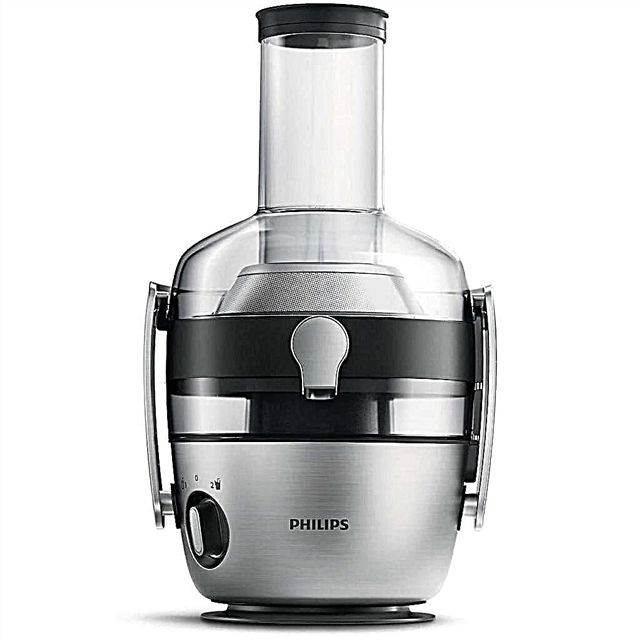
This device has a wide neck for loading raw materials, which allows you to load vegetables and fruits as a whole. Separately, it is worth noting the special function FiberBoost, which allows you to adjust the density of the final product.
This juicer can be easily washed using pre-cleaning. A polished sieve is perfectly washed with a regular sponge.
- Easy to assemble and disassemble,
- There is an anti-drop system,
- It works quietly and does not vibrate,
- Metal housing
- Additionally comes a recipe booklet.
- Expensive.
The average price is 15509 rubles.
This representative of Korean production is also recognized as one of the best and belongs to the premium category. The model refers to horizontal type screw juicers. It is able to effectively cope with any type of raw material, even with very specific ones, such as pine needles or sprouted wheat. There are special nozzles that allow you to use the device for cooking a variety of dishes.
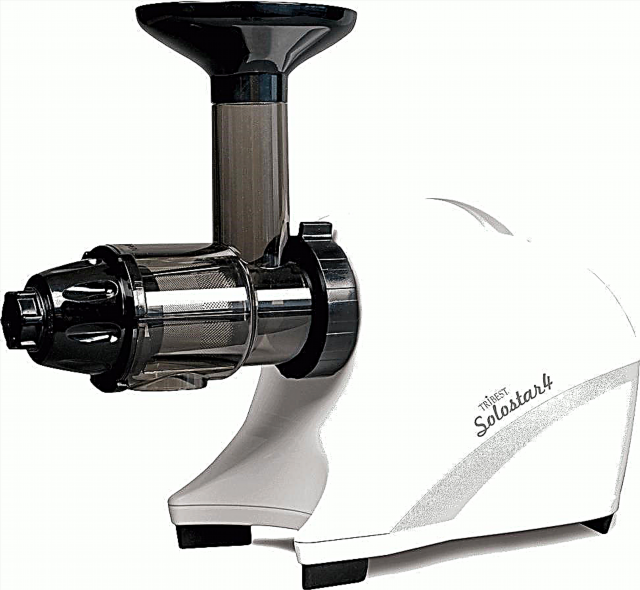
Such wide possibilities are provided by the unique device of the sieve and screw made of a special material with increased strength. The model is very powerful. In addition, the manufacturer gives a long warranty on this device.
Table of contents
A household juicer is a well-known, but not too popular, kitchen appliance. For someone who is not used to starting the morning with freshly squeezed juice, choosing a home juicer may seem like a very non-trivial task. What parameters should I pay attention to? How do some juicers differ from others? Which ones are best for a glass of juice, and which ones are for processing large volumes of products? Let's figure it out.
Types of Juicers
There are not many types of different household juicers on the modern market. The most popular today are screw and centrifugal. A separate niche is occupied by citrus juicers (electric or mechanical presses). And finally, in the “for fans” section, you can find juicer presses. There are also combined models that combine the capabilities of citrus and screw / centrifugal, but they are in the vast majority. Take a closer look at each of these types.
Vertical screw juicers
The screw mechanism of such juicers is located vertically. The auger captures and cuts the fruit itself, during loading almost no need to use a pusher. Such models take up relatively little space on the table (but they can turn out to be quite high - it’s worth checking the distance between the worktop and kitchen cabinets) and they work quite quickly - the fastest ones approach the average centrifugal juicer.
Horizontal screw juicers
In these juicers, the screw is located horizontally, like in a meat grinder. The juicer, respectively, will not be too high, but more overall horizontally. They also require the user to carefully approach the cutting of raw materials - the diameter of the neck of this type of device, as a rule, is even smaller than that of vertical augers. As in the case of the meat grinder, here you have to actively use the pusher. The cycle of work for horizontal auger models, as a rule, is longer than for vertical ones.
Twin Screw Juicers
Two augers allow high-quality and fast processing of a large number of fruits, including their hard and fibrous types. Devices of this type have appeared relatively recently and are gradually becoming fashionable along with professional blenders. The reason for the emergence of demand for those and other devices is the same - a massive interest in healthy nutrition, which is associated with the presence in the diet of a large number of dishes from raw fruits.
Citrus Juicers
This type of juicer is also well known to almost everyone. Electric citrus juice squeezers are a body with a vertically mounted motor, on which is mounted a rotating ribbed nozzle, suitable for squeezing juice from half a lemon or an orange. Such a motor turns on usually by pressing the nozzle. Hold and push on half the fruit will have to hands. Well, the most budget option does not even have a motor: you will also have to rotate the orange manually.
In a separate category, mechanical presses should be distinguished. Despite their high cost, they are popular not only in households, but are also widely used in bars and restaurants - where there is freshly squeezed orange juice on the menu.
The advantages of such devices are obvious: mechanical presses are independent of electricity and do not consume it at all, they have higher reliability (but not too high speed).
However, a mechanical press in terms of spin efficiency can compete with the best screw models of electric juicers and will almost certainly be better than centrifugal ones. Well, some specific fruits (pomegranates, for example) cannot be squeezed out on anything else.
Alas, you won’t get a wide variety of juices using the press: you will have access to citrus and pomegranate juices. In addition, you can’t squeeze a lot of juice in a short time - the process is too long and human-dependent.
Presses for squeezing juice
The rarest guest in modern kitchens is the juicer press, which squeezes juice by squeezing the product with great force. Some adherents of a healthy diet argue that such a method is most preferable from the point of view of preserving useful substances (which, frankly, we personally doubt that).
The productivity of such juicers is not too high: too much time is spent on preliminary preparation. The product must be cut, wrapped in a special cloth or put in a bag, squeezed using a press (often in several steps, folding the cloth in half after each squeezing), manually shake the cake and rinse the cloth for the next product ...
In general, the device is obtained, as they say, "for everybody." But the press is suitable for absolutely any type of product and is independent of the availability of electricity. It can even be taken where there is no electricity. Unless, of course, quite a lot of weight scares.
Selection principle
After listing the main types of juicers, as well as mentioning their advantages and disadvantages, we will move on to the main part - directly to choosing a juicer for the home.
What should I look for when choosing a particular model? Which parameters are important and which are secondary?
Getting to the choice of a juicer, the first thing you need to decide on the answers to several simple questions. First you need to determine the type of products to be processed, the estimated volumes, the frequency of use of the device and think about the need for additional functions and nozzles.
Type of product
The type of juicer depends on what products you are going to squeeze. The most “omnivorous” are the vertical screw juicers: they can cope not only with fruits, but also with hard vegetables, fiber products such as celery, and as a bonus, they may help to prepare sorbet. Such juicers have proven themselves for everyday use, but are not too good if you need to process a large volume of products.
Complete with a horizontal screw juicer it is often possible to meet additional nozzles, allowing, for example, to press butter from nuts and seeds. They often have the status of more “prestigious” models, but they will have to pay for this with the increased price of the device, often even slower than vertical ones, with the speed and need to carefully cut the raw materials into small pieces. However, in recent years, budget models have also become more common.
If the volumes of products are large, and the spinning of solid vegetables and fiber products is not expected, the most suitable option is a centrifugal juicer. At the same time, the more vegetables or fruits you plan to process at a time, the more important the parameter will be the power of the juicer and the speed of rotation of the centrifuge. For the most demanding users, we recommend paying attention to models that allow you to send whole apples or other small fruits to the juicer. This will significantly save time on pre-processing (cutting) of products.
Special citrus juice squeezers and hand presses will come in handy only if you are absolutely certain that you plan to squeeze nothing but citrus fruits and pomegranates. They will also be good as a second juicer - if you squeeze orange juice daily, and apple juice only occasionally.
If you opted for an electric model, you should not save too much and purchase a device with a small power: the motor of such a juicer can stall when the nozzle is pressed too hard. We also recommend that you carefully look at the size of the nozzle. Best if there are several. The fact is that each citrus fruit nozzle is suitable for its fruit size: small nozzles do better with lemons, large nozzles with oranges and grapefruits.
We will not discuss the presses that we mentioned above in detail, and leave them for lovers of “healthy nutrition”: the spinning process is too specific in them. We believe that if someone decided to opt for this rare juicer, then this person managed to evaluate for himself all the pros and cons of this design and imagines what he is going for.
Performance and efficiency
The productivity of the juicer (that is, the amount of product that it can process per unit of time), despite its apparent importance, is not really such an important factor: for small volumes of the product not exceeding a few kilograms, saving a couple of minutes will be almost imperceptible against the background the total time that will be spent on preparing the product and washing the juicer upon completion of work. By the way, manufacturers of screw juicers were among the first to understand this. That is why you can find juicers that are advertised as “slower”: low speed, perhaps, will allow you to squeeze more juice, and the noise level of such a device will be lower.
It is much more useful, in our opinion, to pay attention to the effectiveness of the spin cycle (that is, the amount of juice that can be obtained from one kilogram of the product). This parameter can vary from model to model quite noticeably. Unfortunately, you can’t trust the statements of marketers here, so the only way to find out how efficiently the juicer squeezes juice is through independent reviews and personal experience.
The best manufacturers of juicers - which company to choose
No wonder consumers prefer juice extractors of famous brands, noting their high quality and rich functionality.
The best manufacturers of the segment are the following companies:
You can read more about the flagship models of these companies in the ranking of the best juicers. In the meantime, let's see which juicer is right for your family.
The principle of operation and device juicer

Juicer is a household kitchen appliance designed to produce juice from fruits, vegetables, nuts and herbs. The variety of these units on the market is quite large and they all work in their own way, but the general principle remains unchanged.
Each model has curly nozzles or knives that destroy the pulp of the fruit, allowing the juice to flow freely into the container. They can be motionless (as, for example, in citrus juicers), driven manually or with the help of an electric motor.
As for the device, with some amendments to the design features in any juicer you will find the following elements:
• Housing - in electric models, an engine is additionally installed in it,
• A mouth with a pusher or just a wide opening for loading fruits,
• chopper,
• Capacity for collecting juice,
• Container for cake (may be absent).
Depending on the force that drives the working elements of the juicers in motion, they are usually divided into 3 main types:
Manual models are simple to primitive, because here all the work is done by a person, and the device turns into a regular tool for squeezing juice. Most often in this design are citrus juicers.
Mechanical are a kind of press, which again has to be acted upon with your hands. Bright representatives of devices of this type are a juicer for tomatoes, more like a manual meat grinder, as well as presses for pomegranates and grapes.
Electrical appliances often work on the same principle as screw mechanics, only a motor is connected to the shaft. However, among modern juicers there are many rotary models, more similar to a hybrid grater and centrifuge. In any case, the efficiency of electrical units is the highest, since they are able to extract from pulp from 70 to 95% of the juice.
For citrus

The simplest type of technology, designed to produce fresh juice from lemon, orange, lime, grapefruit and other types of citrus. It is a kind of bowl with a conical ribbed nozzle, on which you need to string a half of the fruit. Further, it all depends on the type of machine chosen: if it is an electric model, it is enough to turn on the motor, and a rotating nozzle will squeeze out all the juice from the pulp into the container. With a manual squeezer, you have to scroll citrus yourself.
Pros:
- Compact size
- Simple and robust design
- Energy saving even in electric models (20-60 W),
- Low price.
Minuses:
- Not suitable for processing other fruits.
Centrifugal (rotary)
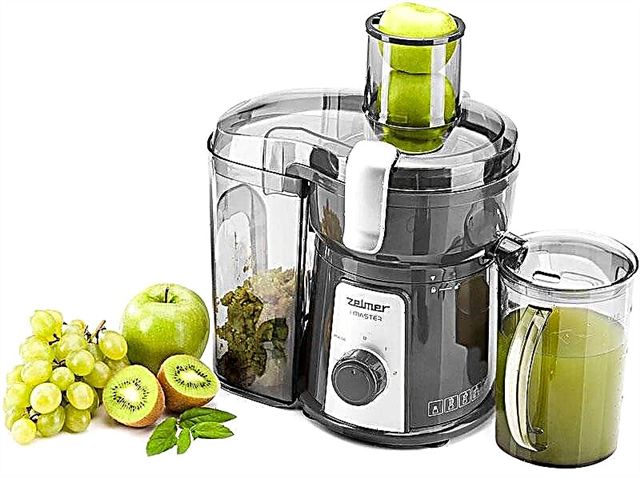
Centrifugal juicers are the most popular and purchased. This type of appliance is suitable for processing all berries and vegetables (except fruits with seeds). The principle of operation of rotor technology is similar to the operation of a centrifuge of a washing machine. Only here is an iron basket-separator, and above it rotates at a speed of 10,000 rpm a disk grater, chopping the fruits.
Juicy pulp is separated from the cake in the separator, and the released liquid under the action of centrifugal force flies out of the basket and flows into the receiver. Alas, the high speed of the mechanisms leads to heating of the inner bowl, which affects the nutritional value of the drink - some of the vitamins have time to collapse. The engine itself is also heated. This makes it impossible for his long work - you have to periodically stop the car for rest.
Modern rotary juicers can come with 2 types of separators. Cylindrical ones allow extracting up to 90% of the juice from the pulp, but they do not provide a system for removing waste meal. You will have to periodically stop the appliance and remove the remaining fruit yourself. Juicers with a conical basket dump the cake in a special container during operation. But they have another drawback - a lower juice yield than in cylindrical models (about 20%).
Pros:
- High speed
- Simple operation
- Wide (up to 9 cm) throat for laying whole products,
- Relatively low cost.
Minuses:
- The juice is heated, and some of the nutrients in it are destroyed,
- At high speed, the drink is made with foam,
- Due to rapid oxidation, the juice is not suitable for any long-term storage.
Juicer selection options

Before going to the store for a juicer, decide what kind of fruits and vegetables she will have to work with most often, and what volumes of juice your family consumes. Will you use the new appliance to prepare other dishes? Having decided on the tasks that you set before the juicer, you can already choose the optimal design. And then everything will be decided by the technical characteristics of the device.
Production material
The case of the mechanism can be plastic, aluminum or steel. The first option is easier, but short-lived. In addition, it is subject to increased environmental safety requirements, therefore, only food grade plastic is used to produce juicers.
Aluminum and steel are stronger, but more expensive. Nevertheless, all internal parts of the device (separator, screws, strainer) should be made only of stainless steel, which does not react even with acidic products.
Power
It all depends on the type of device and the fruits processed in it:
- A citrus juice squeezer will do just 50 watts to do the job,
- For processing soft fruits such as peaches and bananas, an aggregate with a capacity of 250-500 W is required,
- Squeezing juice from hard fruits (apples, pears) will require at least 800–1200 watts.
Power, albeit indirectly, largely determines the speed of rotation of the working elements of the juicer. And the bigger it is, the faster and more efficiently the juice from the fruits will be squeezed. One “but”: a drink obtained at high speeds will be cloudy due to the excess content of crushed pulp. In general, to obtain high-quality juice from a rotary type juicer, a rotation intensity of about 10,000 rpm is sufficient.
Speed modes
Different hardness products require their spin technology. Therefore, pay attention to the number of speeds and the possibility of switching them. This will allow you to set a high power for fruits with dense pulp or choose a gentle regime for processing delicate fruits.
Modern juicers can have up to 9 speeds, although 3-4 is enough for home use. The presence of pulsed and reverse modes is also welcomed - they will make the processing of solid products more efficient.
Noise performance
For home juicers, this figure is not standardized, but some devices emit very loud noise during operation. Moreover, it can come not only from the engine, but also may be the result of poorly fixed and rattling structural elements. Screw conveyors are considered to be the “quietest” juicers, but even we recommend checking them in the store for the level of noise that they produce when working at full speed.
Design features
Some of the nuances that designers of household juicers have come up with are able to make working with the device more comfortable and convenient.
Pay attention to such details:
1. The diameter of the loading neck should be as large as possible (8–9 cm) - this will allow you to immediately lay whole fruits in the unit without cutting them.
2. The regime of ejection of spent cake will make it possible to process large volumes of fruits practically without stopping. It is very convenient if for this a separate removable container is provided in the juicer.
3. A separator for foam removal will allow you to get a clean, transparent drink that even capricious children will not refuse.
4. Rubberized legs provide stability to the device on the table.
5. The anti-drip system is a useful function that will prevent you from staining the tablecloth after you have filled the glass with ready-made juice.
The presence of a container for juice
Here, the owners have to weigh the pros and cons, since the designs with a complete glass and without it have approximately the same pluses and minuses.
The presence of a built-in juice tank allows you to protect the contents from accidental spilling, and the scale on a transparent container will show the amount of the finished drink. The volume of the built-in capacity is usually small, but it will definitely be enough for a couple of bookmarks.
The absence of a receiving container indicates that the juicer has a system for direct supply of juice directly to a substituted mug or glass. A great reason not to wash excess dishes.
Which juicer to choose
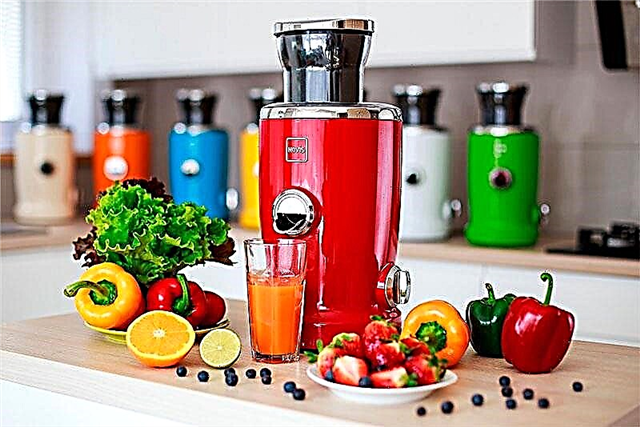
1. For connoisseurs of lemonades, oranges, as well as fans of the use of citrus juices in cooking, an inexpensive manual squeezer is enough for processing citruses. If you need to twist a large number of fruits, take an electric model with a power of about 25-50 watts.
2. For a family of 2-3 people who drink juices from a variety of products, a centrifugal apparatus with a cylindrical separator is suitable. The optimal power of the device is within 700 watts.
3. For a large family of 4–5 people and lovers of “eco parties”, a rotary squeezer will also work, only this time with a cone separator and a capacity of at least 1 kW.
4. Inveterate summer residents who have a large garden area and have the opportunity to drink free natural juices at least every day, need a juicer that can process serious volumes of various products. Here it is better to step aside and choose a screw model. Power is not very important - 200-300 watts is enough.
How much do juicers cost

1. The most simple manual citrus juice squeezer will cost you from 100 to 400 rubles.
2. For an electric model in cheap plastic, you will have to pay at least 350-800 rubles. Prices for a more functional technique with direct juice delivery and additional options like “drop-stop” start from 1000 and are lost in sky-high heights, jumping over the mark of 40,000 rubles.
3. The cost of rotary juicers without dumping pulp ranges from 1.5-40 thousand. If you add a cake removal system, a stainless steel case and a full set of useful functions to such devices, the price can fly up to 90-110 thousand rubles.
4. Screw squeezers in vertical design can be bought at a price of 3 to 35 thousand rubles, although there are super-expensive models worth 85-100 thousand. Horizontal ones are in the same price category, only their ceiling does not exceed 70,000 rubles.
Working hours
For many devices, the manufacturer indicates the maximum duration of work, after which the juicer will need time to rest (as a rule, this is due to the heating of the motor). This parameter, as a rule, is decisive in the question “how much juice can be squeezed at a time”.We strongly recommend that you find this item in the instructions before buying the device - so that you do not have to take breaks during the juice extraction process.
Additional features
The extra features that some juicers have are usually determined by the availability of extra nozzles or special parts. So, with screw juicers you can almost always find a nozzle for making sorbet (turning frozen fruits into a paste). At some devices, you can find nozzles for cutting / chopping vegetables. Others will offer special nozzles for squeezing dough and making homemade noodles.
We will not forget that all these additions are optional and can hardly be considered as a decisive argument when choosing one or another model. Simply put, you do not need to choose a model that is not suitable for the main parameters just because it has rich equipment.
Cost
It would be wrong not to mention the cost, however, it would be pointless to compare different devices solely on this parameter. In addition to the obvious factors responsible for the formation of the final price, there are less obvious ones - mark-ups for the brand or positioning of the juicer as “environmentally friendly” and “healthy” (in this case, the price rises sharply).
But within the framework of one niche (when comparing similar models), the price will not be superfluous: different brands often offer models very similar in their characteristics with a difference of several thousand rubles, which can be saved if you wish.
IXBT.com Performance Factor
In our reviews of juicers, you can come across a parameter called the “Productivity Factor”, which allows you to create a general idea of the capabilities of a particular model and compare them with each other.
When we test the device for squeezing juice, we carry out 4 mandatory tests: we process green Granny Smith apples, pink grapefruits, carrots and white cabbage. In each case, we measure exactly 1 kilogram of raw materials and time the product processing time. Then we measure the juice yield in grams and calculate the arithmetic average of the production time of four types of product and the juice yield.
These figures allow you to evaluate the speed of the device and the efficiency of the spin. On average, naturally, centrifugal models will have a high rate of speed, and augers will have a high yield of juice. And vice versa: the juice yield is more than 500 g (from 1 kg of raw materials) - this is a high indicator for a centrifugal model, and the operating time is less than 3 minutes (for processing 1 kg of raw materials) - a good speed for a screw device.
Conclusion
We have listed the main factors that you should pay attention to when choosing a household juicer. Note that for the vast majority of users, the main question that needs to be decided is the choice between a screw and a centrifugal juicer. Our experience shows that those lovers of freshly squeezed juice who make it often usually opt for a screw model, thereby “voting” for a variety of products, even to the detriment of processing speed. A cheap centrifugal juicer, as a rule, has one advantage - the price. And expensive models are usually paid attention to those who value processing speed (that is, the ability to quickly process large volumes of raw materials).
We left out the brackets the features of individual models and the nuances associated with their operation. The purpose of this review is to summarize information and find simple and clear selection options. Well, for those who want to look at specific models, we will do a summary review of the devices we tested.

